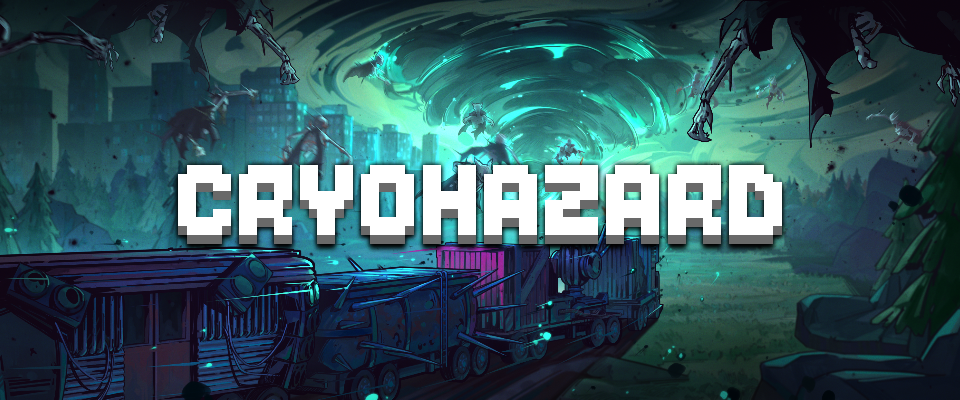Devlog #1: Get out of the pit
This post was originally made at https://www.bossypino.com/cryohazard-devlog-1-get-out-of-the-pit/.
It’s dark. You don’t know what the best path forward is, and the walls to get out feel almost impossible to climb. You’re at a standstill- slamming your head against the wall until an opportunity presents itself. And all the while unable to shake the feeling that the series of decisions that got you into this mess started months ago.

Welcome to the pit- AKA a paralyzing stumble into development hell.
On a previous, now failed project, my design partner used the saying- ‘being in the pit.’ It’s when things during development were darkest- not necessarily emotionally dark (though it certainly didn’t feel good), but rather a reference to a lack of light and clarity on the best path forward.
For example- deep into game production, we realized the main gameplay loop wasn’t as fun as it ought to be. And with that came the recognition that there was nothing more important than the core loop being solid, since it’s the core of the experience and changes to it ripple across all other aspects.
Solving my way out of that design challenge, with all the engine restrictions, partner preferences, design philosophies, narrative cohesion, tester feedback, etc. was a GRIND– a churning through idea after idea, hoping to see a glimmer of ‘the right path forward.’
To find the light and get out of the pit.
Prioritizing the wrong things leaves you in the dark
In retrospect, many of the pits encountered during the development of the now-failed project were of our own making. We had deep flaws in our core loop because in the earliest phases,
- We settled on ideas that seemed the most interesting and ran with them before nailing them down with prototypes.
- We let storyboards and themes direct the flow of gameplay instead of fun, boxing us into restrictive design hurdles.
- We had different ideas about the best way to make the same game, and while we thought this divergence would flesh out a more diverse experience, it just led to muddled gameplay and confused direction.

Realizing what your project ACTUALLY is vs. what you hoped it would be while in active production is often a critical failure.
Cut to the end of that project and the start of Cryohazard approximately 5 months ago. A solo project of smaller scale, impactful worldbuilding potential, and with a bunch of interesting and fun ideas for gameplay. I was going to have my WHOLE development path, up to the day of release, planned out beautifully, without the chance of falling into a pit of any kind along the way.
Right?
Guess what- Cryohazard had many pits
I want to clarify- ‘being in the pit’ is not normal or good development. There will always be difficult and challenging design hurdles during the course of game dev (if you’re making anything worthwhile) but realizing what your project ACTUALLY is vs. what you hoped it would be while in active production is often a critical failure.
Cryohazard started off as a exploration based merchanting game in the vein of Tradewinds and Sid Meier’s Pirates!, but set in the frozen tundra of an alien sci fi world. I had a strong pool of mechanics from reference games, a direction I could commit to, a theme and works that I was inspired to bring to life.

And months later, I found myself just like before- playing a programmed build where the core gameplay loop was deeply flawed. Serviceable maybe, but without the love, magic, or secret sauce that I’ve seen in games I love and what drives me to design games in the first place.
And now the dreaded ‘what to do’. Trapped in a pit without enough light shining down to allow myself hope. Do I keep iterating the programmed build again and again until I’m playing something I enjoy? Or was it flawed from the start- do I start from scratch and ‘do better next time?’
Ways to avoid finding yourself in the pit
- Do not start producing content until prototyping is complete. Like, TOTALLY complete.
- Have a paper-prototype be proven fun and engaging before you’ve written a line of code.
- Be wary of design decision that ‘work well’ or ‘people will like’ when they don’t service the most important thing- making a game YOU want to play.
- Let the game tell you what it wants to be. If you don’t know how to scope it, start with the barest of gameplay loops and move in directions that strengthen it.
- Story and narrative elements come AFTER mechanical ones. Unless you are making a visual novel, the most important story of a game is the one told between the player and the mechanics- something unique to the medium and worth prioritizing.
Each of these points could be a post of their own, and even making the right decisions will fall flat without brutal honesty, continuous self-reflection, and most importantly- vulnerability.
Pitfalls arise from a critical lack of clarity, and are devestating when revealed months into production. Let the game tell you who it is through mechanics alone before venturing too far into development.
Get Cryohazard
Cryohazard
A spooky turn-based strategy rogue-lite.
| Status | Released |
| Author | BossyPino |
| Genre | Strategy |
| Tags | 2D, Atmospheric, Driving, GameMaker, Horror, Pixel Art, Roguelike, Roguelite, Story Rich, Turn-based |
More posts
- Cryohazard Demo Patch #1May 06, 2024
- Devlog #2: Make what you knowApr 19, 2024
- Demo coming soon!Apr 16, 2024

Leave a comment
Log in with itch.io to leave a comment.